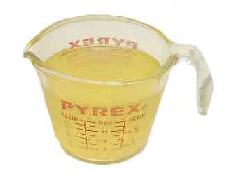Germany, EUROPE
 Schmaltz spread is the answer to butter and cheese. Schmaltz is derived from the German word schmelzen, which means to melt. Here we are melting lard and tallow. This has been brought to the American English by the Yiddish speaking Jews, who referred to the melting of kosher poultry fat. Traditionally, Schmaltz is made by cutting the fatty tissues of the slaughtered chicken or goose into small pieces and melting the fat to collect the drippings.
Schmaltz spread is the answer to butter and cheese. Schmaltz is derived from the German word schmelzen, which means to melt. Here we are melting lard and tallow. This has been brought to the American English by the Yiddish speaking Jews, who referred to the melting of kosher poultry fat. Traditionally, Schmaltz is made by cutting the fatty tissues of the slaughtered chicken or goose into small pieces and melting the fat to collect the drippings.
There are two ways of commercially manufacturing Schmaltz, the dry and the wet method. The former involves heating the fats in a pan on low heat and stirring gradually to separate the fat. In the wet method, the fat is passes through the steam, and the melted steam is filtered and clarified. Homemade schmaltz includes cutting unsmoked chicken or goose fat into small pieces, and melting in a pan by moderate heat. The fat is then extracted and the melted fat is strained through cheesecloth into a storage container.
As the melting process removes water and proteins, it can be used to preserve meats, as bread spread and it is used for basting meats for roasting or for cooking stews.
Schmaltz originated when the Jews sacrificed animals and they gave the animal fats as a sacrifice. However, those fats were not used for cooking. There is a variety of Schmaltz.
Schweineschmalz (pork schmalz, Lard) is a pearl white color, and the melting point lies between 79°F and 104°F (26-40°C), Flomenschmalz is made out of pork belly fat (Flomen), and has a lighter texture, Griebenschmalz (called Grammelschmalz in Austria) is made from Flomen or back fat, and still contains pieces of cooked bacon, called Grieben (or Grammel).This fat is folded with chunks of apple or onion and spiced with marjoram or thyme.
Ganseschmalz (goose Schmaltz) is yellowish than pork Schmaltz. In its pure form it has a distinctive flavor, and a very low melting point of 77°F (25°C), which makes it almost liquid at room temperature. Therefore, it is blended with pork Schmaltz to raise the melting point, in which case the percentage of pork fat is noted on the packaging.Ganseschmalz goes rancid easily and so should be used quickly.
Schmaltz was never so complicated even when it originated Before Christ…goodness gracious. Still then, a wonderful weirdo at Christmas times, to make piecrust and cakes…what was wrong with butter and oil? Nobody ever told you that they contain animal fats too.
Great-schmaltz-recipes: Recipe Goldmine




